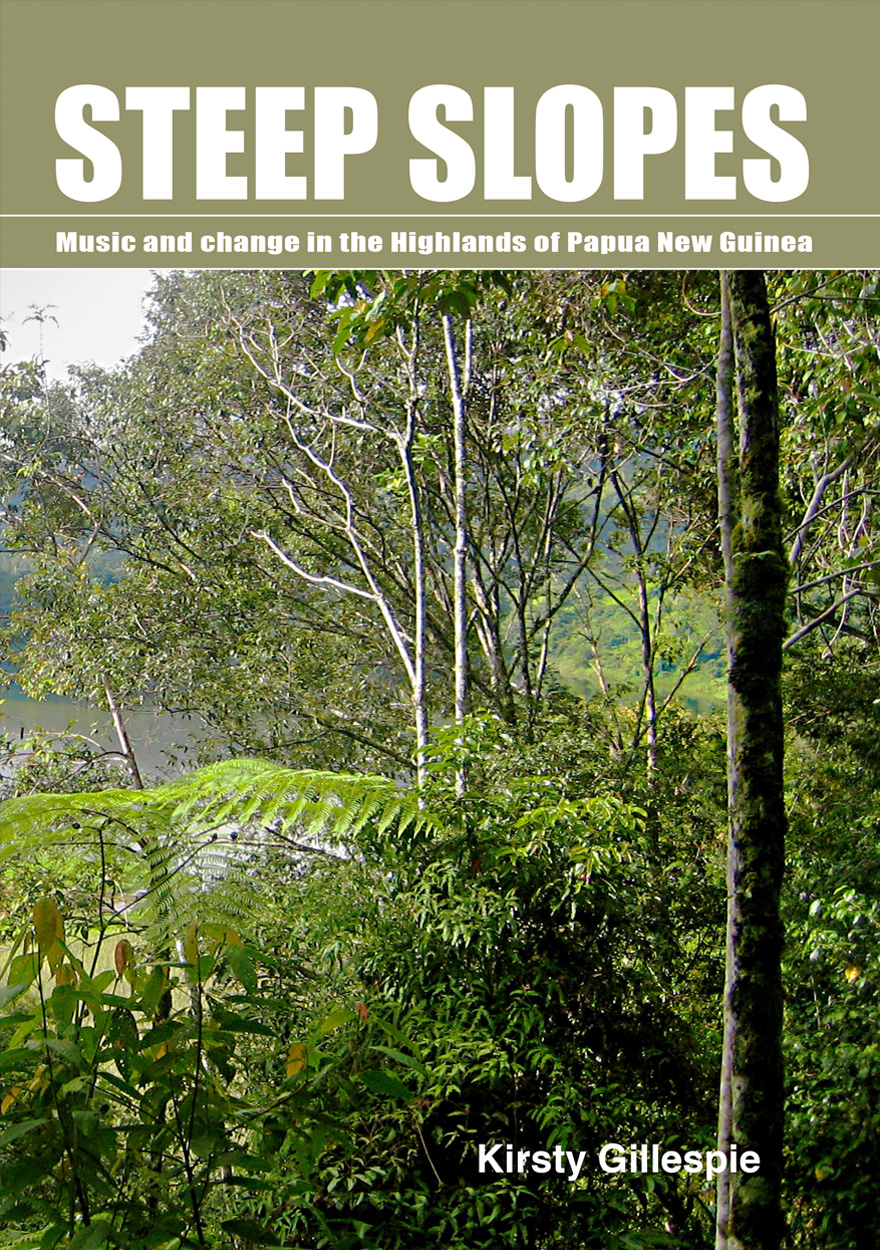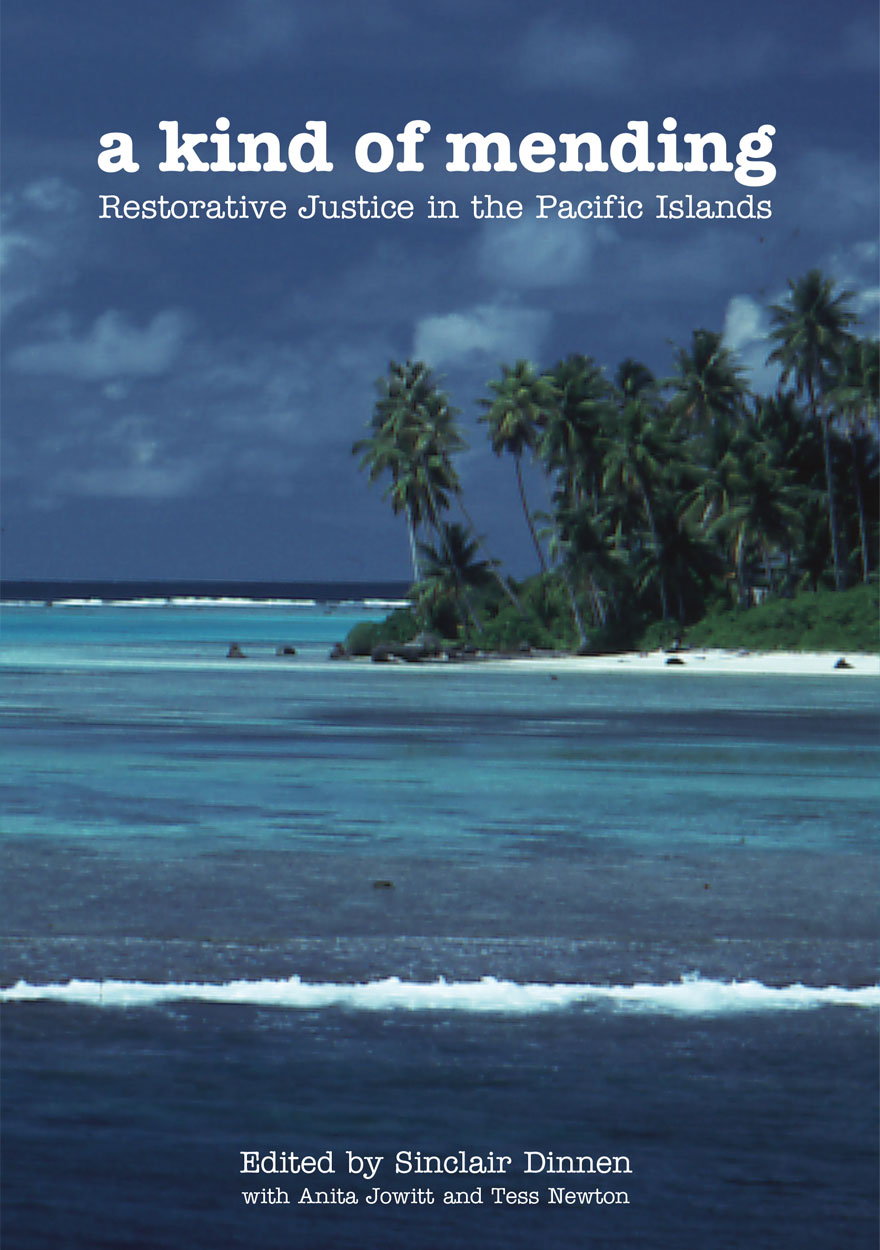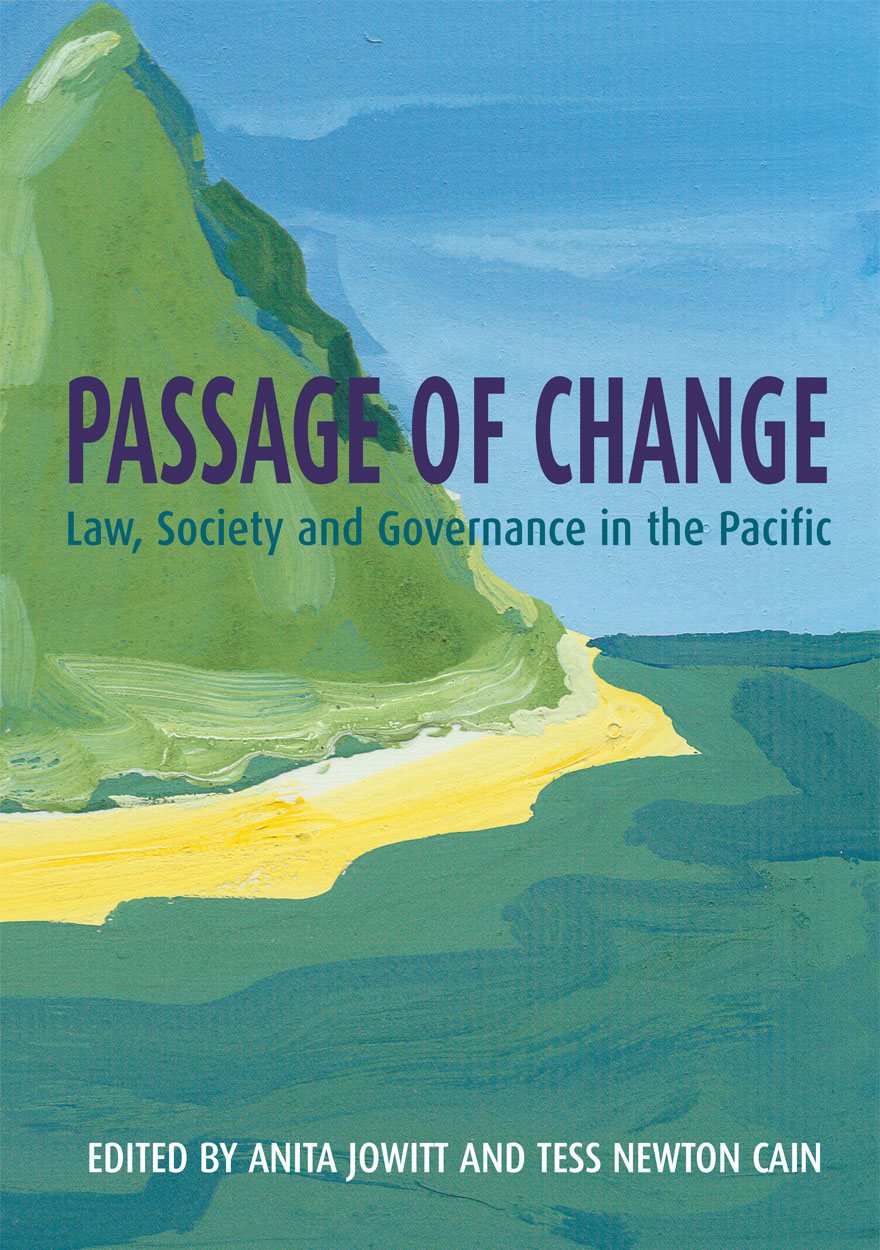Books
Browse or search ANU Press' range of books or find out more about the publications' authors and co-publishers. Download the book for free or buy a print-on-demand copy.
Displaying results 571 to 580 of 780.

Indigenous Participation in Australian Economies »
Historical and anthropological perspectives
Edited by: Ian Keen
Publication date: December 2010
This volume seeks to contribute to the body of anthropological and historical studies of Indigenous participation in the Australian colonial and post colonial economy. It arises out of a panel on this topic at the annual conference of the Australian Anthropological Society, held jointly with the British and New Zealand anthropological associations in Auckland in December 2008. The panel was organised in conjunction with an Australian Research Council (ARC) Linkage Grant project on Indigenous participation in Australian economies involving the National Museum of Australia as the partner organisation and the School of Archaeology and Anthropology at The Australian National University.
The chapters of the volume bring new theoretical analyses and empirical data to bear on a continuing discussion about the variety of ways in which Indigenous people in Australia have been engaged in the colonial and post-colonial economy. Contributions cover settler capitalism, concepts of property on the frontier, Torres Strait Islanders in the mainland economy, the pastoral industry in the Kimberley, doggers in the Western Desert, bean and pea picking on the South Coast of New South Wales, attitudes to employment in general in western New South Wales, relations of Aboriginal people to mining in the Pilbara, and relations with the uranium mine and Kakadu National Park in the Top End. The chapters also contribute to discussions about theoretical and analytical frameworks relevant to these kinds of contexts and bring critical perspectives to bear on current issues of development.

Information Systems Foundations: The Role of Design Science »
Edited by: Dennis Hart, Shirley Gregor
Publication date: December 2010
This volume presents papers from the fourth biennial Information Systems Foundation Workshop, held at The Australian National University in Canberra from 2–3 October, 2008. The focus of the workshop was, as for the others in the series, the foundations of Information Systems as an academic discipline. The emphasis in this workshop was on the movement known as ‘Design Science’ and its importance in practical disciplines such as Information Systems. The chapters in the volume provide a critical examination of current design science ideas, with the role of human creativity given special mention. The philosophical underpinnings of design science thinking are also examined. Practically, the volume shows how the design science approach can be used in academic research that leads to artefacts that add value for individuals, organizations and society.

Radical Spaces »
Venues of popular politics in London, 1790–c. 1845
Authored by: Christina Parolin
Publication date: December 2010
Radical Spaces explores the rise of popular radicalism in London between 1790 and 1845 through key sites of radical assembly: the prison, the tavern and the radical theatre. Access to spaces in which to meet, agitate and debate provided those excluded from the formal arenas of the political nation–the great majority of the population–a crucial voice in the public sphere. Radical Spaces utilises both textual and visual public records, private correspondence and the secret service reports from the files of the Home Office to shed new light on the rise of plebeian radicalism in the metropolis. It brings the gendered nature of such sites to the fore, finding women where none were thought to gather, and reveals that despite the diversity in these spaces, there existed a dynamic and symbiotic relationship between radical culture and the sites in which it operated. These venues were both shaped by and helped to shape the political identity of a generation of radical men and women who envisioned a new social and political order for Britain.

The Rudd Government »
Australian Commonwealth Administration 2007–2010
Edited by: Chris Aulich, Mark Evans
Publication date: December 2010
This edited collection examines Commonwealth administration under the leadership Prime Minister Kevin Rudd from 2007-2010. This was a remarkable period in Australian history: Rudd’s government was elected in 2007 with an ambitious program for change. However, as the chapters in this book demonstrate, these ambitions were thwarted by a range of factors, not the least being Rudd’s failure to press ahead when he confronted ‘road blocks’ such the ETS or managing his massive agenda which constantly elevated issues to ‘first order priority’. Although he started his term with stratospheric approval ratings, only two years later his support had collapsed and on 24 July 2010 he became the first sitting Prime Minister to be removed by his own Party before the expiry of his first term.
In this book, expert contributors consider the Rudd Government’s policy, institutional and political legacy. The 14 chapters are organized into four sections, outlining the issues and agendas that guided Rudd’s government, changes to the institutions of state such as the public service and parliament, followed by discussions of key issues and policies that marked Rudd’s term in office. The final section examines Rudd’s leadership and reflects on the personal foibles and political factors that brought his Prime Ministership undone. The Rudd Government has been produced by the ANZSOG Institute for Governance at the University of Canberra. It is the tenth in a series of books on successive Commonwealth administrations. Each volume has provided a chronicle and commentary of major events, policies and issues that have dominated successive administrations since 1983. As with previous volumes in the series, contributors have been drawn from a range of universities and other organisations.

Steep Slopes »
Music and change in the Highlands of Papua New Guinea
Authored by: Kirsty Gillespie
Publication date: December 2010
The Duna live in a physical environment of steep slopes that are sometimes difficult to traverse. A stick of bamboo used as a prop goes a long way in assisting a struggling traveller. Similarly, the Duna live in a social and cultural environment of steep slopes, where the path on which they walk can be precarious and unpredictable. Songs, like the stick of bamboo, assist the Duna in picking their way over this terrain by providing a forum for them to process change as it is experienced, in relation to what is already known.
This book is a musical ethnography of the Duna people of Papua New Guinea. A people who have experienced extraordinary social change in recent history, their musical traditions have also radically changed during this time. New forms of music have been introduced, while ancestral traditions have been altered or even abandoned. This study shows how, through musical creativity, Duna people maintain a connection with their past, and their identity, whilst simultaneously embracing the challenges of the present.

Demographic and Socioeconomic Outcomes Across the Indigenous Australian Lifecourse »
Evidence from the 2006 Census
Authored by: Nicholas Biddle, Mandy Yap
Publication date: December 2010
Across almost all standard indicators, the Indigenous population of Australia has worse outcomes than the non-Indigenous population. Despite the abundance of statistics and a plethora of government reports on Indigenous outcomes, there is very little information on how Indigenous disadvantage accumulates or is mitigated through time at the individual level. The research that is available highlights two key findings. Firstly, that Indigenous disadvantage starts from a very early age and widens over time. Secondly, that the timing of key life events including education attendance, marriage, childbirth and retirement occur on average at different ages for the Indigenous compared to the non-Indigenous population. To target policy interventions that will contribute to meeting the Council of Australian Governments’ (COAG) Closing the Gap targets, it is important to understand and acknowledge the differences between the Indigenous and non-Indigenous lifecourse in Australia, as well as the factors that lead to variation within the Indigenous population.

Green Carbon Part 2 »
The role of natural forests in carbon storage
Authored by: Sandra L. Berry, Heather Keith, Brendan Mackey, Matthew Brookhouse, Justin Jonson
Publication date: November 2010
This report is the second in a series that examines the role of natural forests and woodlands in the storage of carbon. Understanding the role of natural ecosystems in carbon storage is an important part of solving the climate change problem. This report presents a landscape-wide green carbon account of the ‘Great Western Woodlands’ (GWW), sixteen million hectares of mostly contiguous natural woody vegetation to the east of the wheatbelt in south-western Western Australia. For the first time, we provide an overview of the vegetation structure, climate, geology and historical land use of the GWW, and examine how these interact to affect the carbon dynamics of this region’s landscape ecosystems. An analysis of time-series of satellite imagery is used to develop a fire history of the GWW since the 1970s. These layers of environmental information, along with field survey data and remotely sensed greenness, are used to construct a spatial model to estimate biomass carbon stocks of the woodlands at the present day, and to infer an upper limit to the carbon sequestration potential of the GWW. A range of management options to enable protection of high quality carbon stocks and restoration of degraded stocks are evaluated.

The Hmong of Australia »
Culture and Diaspora
Edited by: Nicholas Tapp, Gary Yia Lee
Publication date: November 2010
The Hmong are among Australia’s newest immigrant populations. They came as refugees from Laos after the communist revolution of 1975 ended their life there as highland shifting cultivators. The Hmong originate from southern China where many still remain, and others live in Vietnam, Thailand and Burma. Hmong refugees are now also settled in the USA, Canada, France, Germany and French Guyana. Already the beauty and richness of traditional Hmong culture, in particular their shamanism and embroidered costume, has attracted the attention of the Australian public, but little is known about these people, their background or the struggles they have faced to adjust to a new life in Australia.This interdisciplinary collection of articles deals with their music and textiles, gender and language, their social adaptation and their global diaspora. The book aims to bring knowledge of the Hmong to a wider public and contribute to the understanding of these people.

A Kind of Mending »
Restorative Justice in the Pacific Islands
Edited by: Sinclair Dinnen, Anita Jowitt, Tess Newton
Publication date: November 2010
With their rich traditions of conflict resolution and peacemaking, the Pacific Islands provide a fertile environment for developing new approaches to crime and conflict. Interactions between formal justice systems and informal methods of dispute resolution contain useful insights for policy makers and others interested in socially attuned resolutions to the problems of order that are found increasingly in the Pacific Islands as elsewhere. Contributors to this volume include Pacific Islanders from Vanuatu, Fiji, the Solomon Islands, Papua New Guinea including Bougainville, as well as outsiders with a longstanding interest in the region. They come from a variety of backgrounds and include criminal justice practitioners, scholars, traditional leaders and community activists. The chapters deal with conflict in a variety of contexts, from interpersonal disputes within communities to large-scale conflicts between communities. This is a book not only of stories but also of practical models that combine different traditions in creative ways and that offer the prospect of building more sustainable resolutions to crime and conflict.

Passage of Change »
Law, Society and Governance in the Pacific
Edited by: Anita Jowitt, Tess Newton
Publication date: November 2010
Numerous issues face Pacific states trying to find their way in the early 21st century. Countries are striving to secure the benefits of modernisation. Governance, law and order are needed to reach such a goal, but development cannot be at the price of culture or the environment. The question of how to develop and maintain sound legal systems and legal rules whilst maintaining the unique cultural heritages within the Pacific is a challenge with no easy answer. This interdisciplinary collection locates issues of law and governance within the particular socio-political context of the Pacific island region, presenting sociological, anthropological and political insights alongside jurisprudential analysis. Key issues including corruption, the role of customary law in modern legal systems, the place of human rights in the Pacific, environmental issues and the structure of the state are explored from a variety of perspectives.



